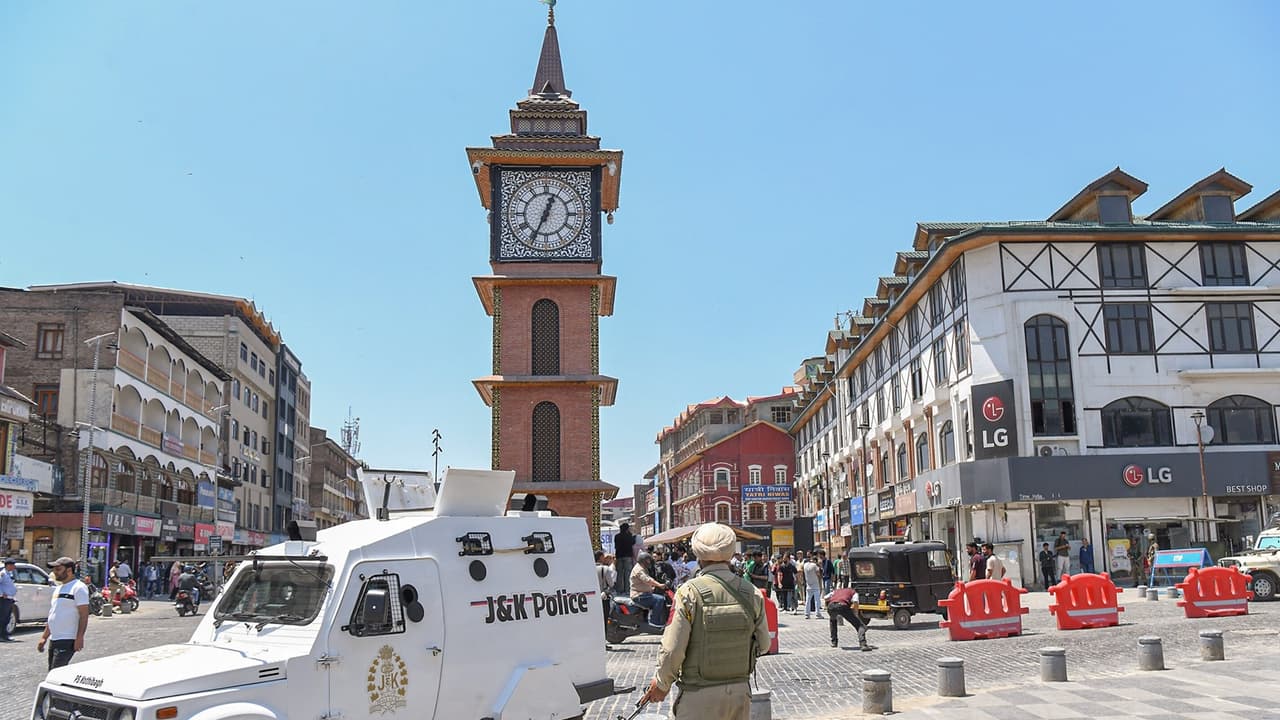Article 370 abrogation: After the removal of Section 370 in Kashmir on 5 August 2019, the expectations of peace-development increased, but the 2025 Pahalgam attack challenged. Terrorism decreased, investment-perpetuation increased, but security concerns still remain intact.
Article 370 abrogation: 5 August is a special day for Jammu and Kashmir. On the same day in 2019, Section 370 was removed from Jammu and Kashmir and it was divided into two union territories. This decision was seen as an important turn that would begin peace and development. The Kashmir will make a way to join the rest of India. Let’s know what has changed here in six years.
Politics: Representation of representation, rights decreased
After August 5 in Jammu and Kashmir, the return of democratic representation in the roadmap of the Center was considered an important milestone. The rights of the Government of Jammu and Kashmir have decreased due to the formation of a union territory. The National Conference (NC) government is currently. Just before the election, control over police and services was given to the Lieutenant Governor, which limited the rights of the elected government. There is a demand for state status to Jammu and Kashmir again. The first decision of Chief Minister Omar Abdullah cabinet was proposed to restore state status.
Security: Pahalgam attack broke confusion
After the decision taken on 5 August 2019, it was said by the central government that this would curb terrorism in Jammu and Kashmir. Terrorist incidents have decreased in six years due to increasing security and attacking the support system of terrorists. In 2025, 28 terrorists have been killed so far. In 2024, 67 terrorists were killed. Local recruitment has come down from 129 to only 1 this year in 2019. In 2024, 28 civilians were killed. All 26 deaths recorded in 2025 occurred in the same incident in the Pahalgam terror attack.
Incidents of stone pelting, closed, kidnapping and weapon snatching have become zero. However, the attack in Pahalgam on 22 April has broken the confusion. This eliminated the nectar of the situation being normal and exposed the flaws in security preparations, especially in open tourist areas. In response to these attacks, India started Operation Sindoor and destroyed terrorist bases in Pakistan. Security forces killed all three Pakistani terrorists involved in the Pahalgam attack.
Economy: Increase in investment, main challenges remain
The Center launched a new industrial scheme in 2021 to increase investment in Jammu and Kashmir. The proposed investment in Jammu and Kashmir is now a total of Rs 1.63 lakh crore. Of these, the project related to investment of more than Rs 50,000 crore is being done. Production has started in 359 industrial units. 1,424 units are in the final stages of completion. The government says that the investment in 2024-25 will be 10 times more than the period 2020.
Revenue: Jammu and Kashmir has seen a sharp increase in tax revenue. The GST collection has increased by 12%. Excise increased by 39%. The overall non-tax revenue increased by 25% between 2022 and 2024. The state’s GDP doubled from Rs 1.17 lakh crore in 2015-16 to Rs 2.45 lakh crore in 2023-24. It reached Rs 2.63 lakh crore in 2024-25.
Electricity: There have been major improvements in the power sector. By mid -2024, 5.74 lakh smart meters were installed. Power generation is expected to double by December 2026. The government has spent about Rs 10,000 crore on strengthening the infrastructure of transmission and distribution. Even after this, there is a lack of energy in Jammu and Kashmir, especially in winter. Its established capacity of 3,500 MW is reduced to 600-650 MW in winter. It has to depend on central allocation.
Financial position: J&K Bank reached a profit of Rs 1,700 crore in 2023-24 from a loss of Rs 1,139 crore in 2019-20. The level of NPA is half. However, the fiscal deficit still remains high. The economy is highly dependent on central grants (up to 70% of expenditure). The contribution of major sectors like agriculture and industry is much less than services.
Tourists increased, but tourist destination under the shadow of security concerns
Tourists have increased in Jammu and Kashmir. In 2023, a record 2.11 crore tourists came here. Tourism contributed 7% to the state’s GDP. After the Pahalgam attack, security concern has increased now. After 2019, 75 new destinations were opened. Homestay was encouraged. Around 2,000 homestays were registered.
Despite incentives, private investment in tourism remains sluggish. Only 5 hotels have opted to join the new industrial scheme. Project exceptions such as a 200 -room hotel in Srinagar and 150 -room hotel in Pahalgam are exceptions. Officers call the limited availability of appropriate land a barrier. After the Pahalgam attack, the administration shut down 50 tourist destinations and launched a comprehensive security review. Since then, 16 such tourist destinations have been reopened to tourists. The incident in Pahalgam reminds that despite the decrease in terrorism, the danger still remains.
